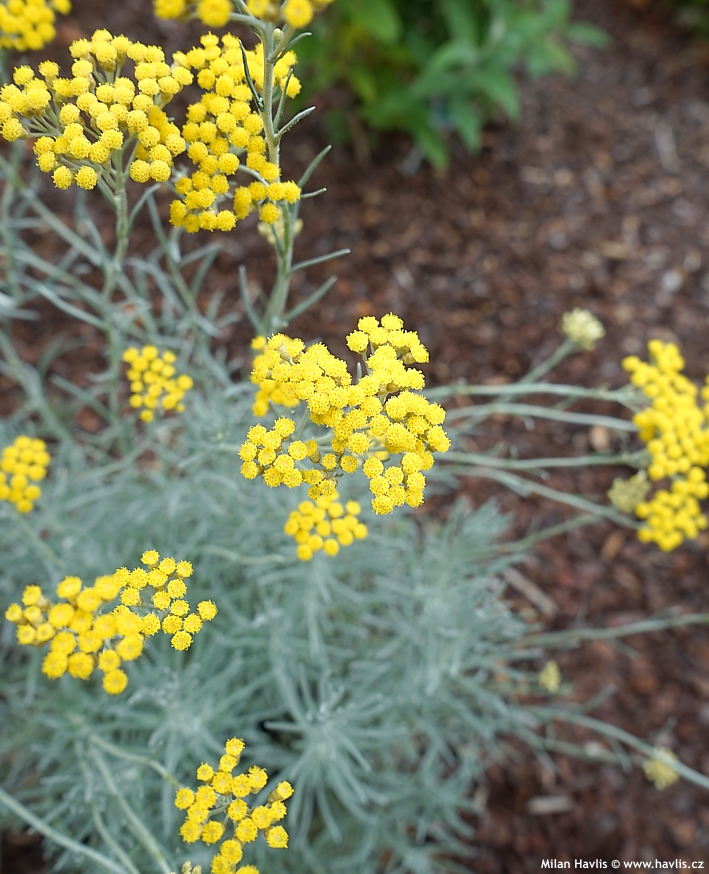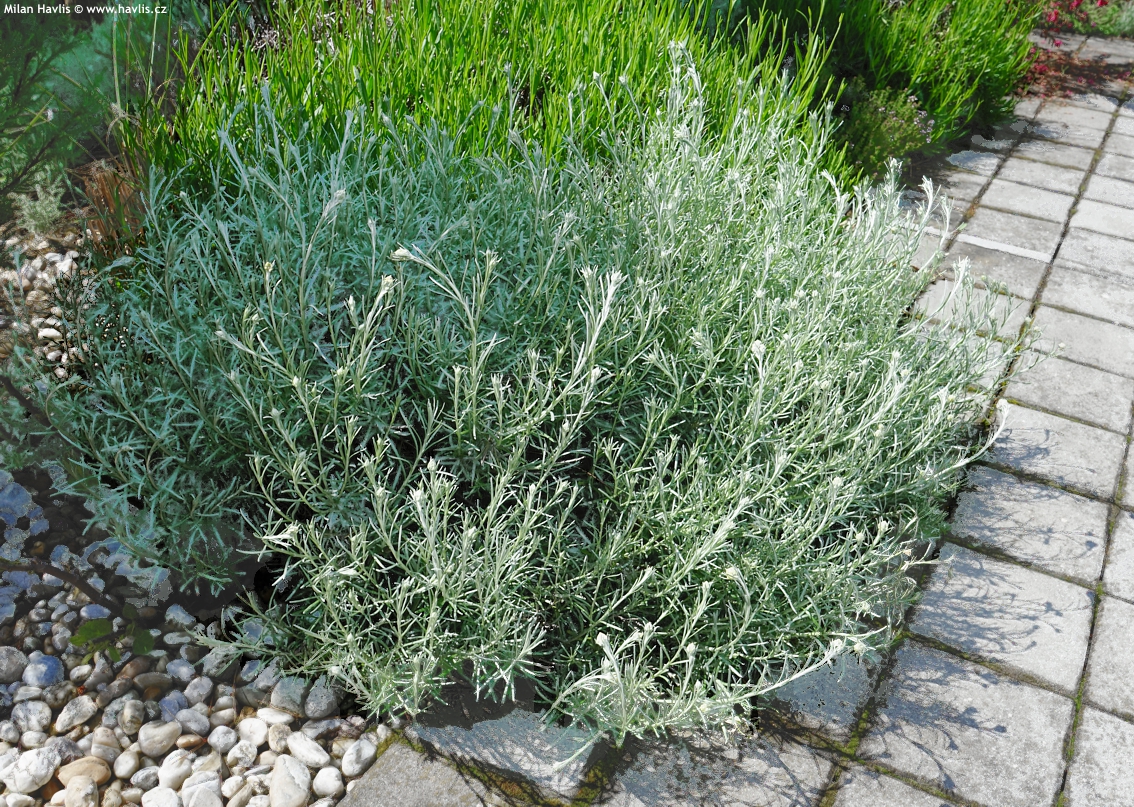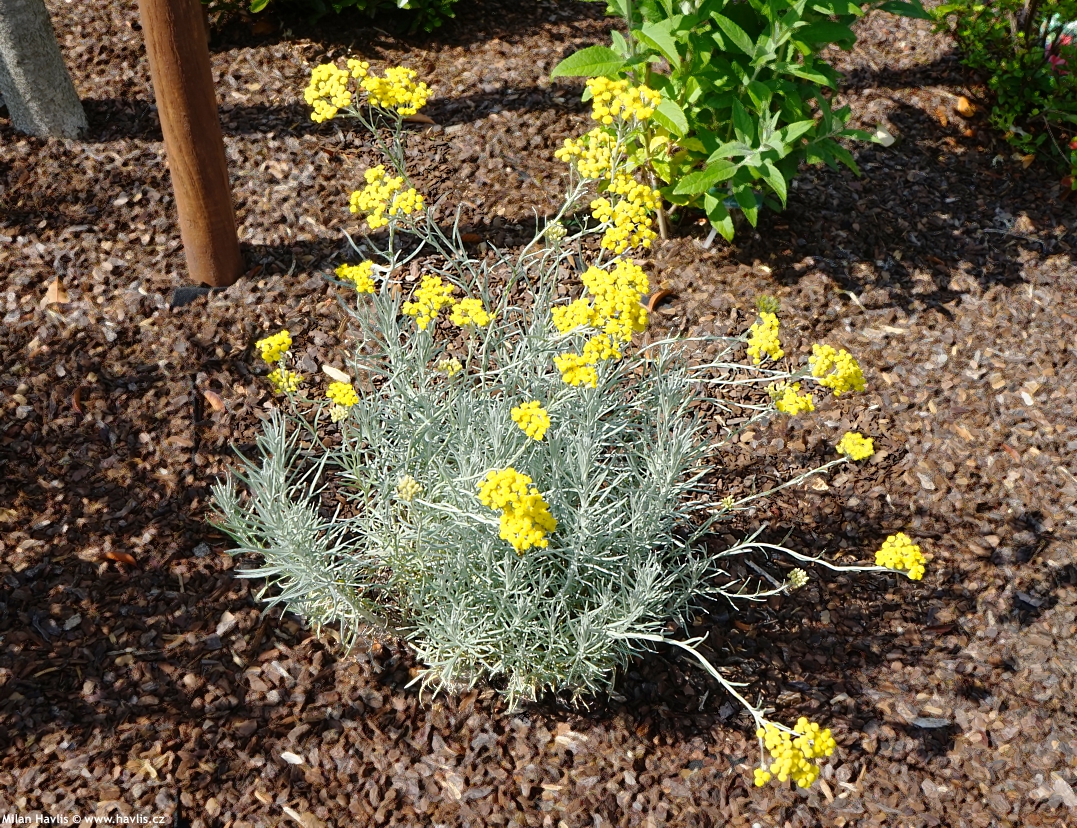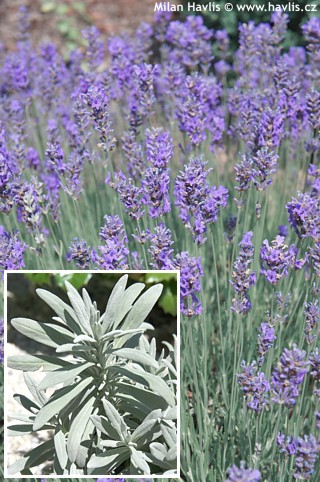Helichrysum italicum Italian strawflower
size/type
mid-sized perennial,small shrub
usual height
0,4-0,6m
usual width
0,4-0,6m
leaves
evergreen broadleaf
colour of leaves
flowers
showy
colour of flowers
blooming time
June-July
location
full sun
soil type
neutral to alkaline
soil moisture requirements
dry and sharply drained (xeriscape)
USDA zone (lowest)
7 (down to -23°C)
winter protection
for zone 5+6

for zone 7

categorized
Description of the plant:
Italian strawflower is an evergreen Mediterranean aromatic semi-woody perennial, sometimes classified as a shrub like lavender, with which it is easily confused before flowers appear. Its common name curry plant, as well as the smell of crushed foliage suggests it has to do something with curry but don’t believe it. It only smells similar which makes it a culinary plant but don't expect an identical taste nor color of true curry. Gourmets usually recommend using the whole twigs that are best removed before consumption because the plant itself does not have a pleasant taste after heat treatment.Italian strawflower is predominantly cultivated as an ornamental plant. Its evergreen leaves are thin, grey-blue-green and densely covered with tiny hairs thanks to which they appear silvery and give the plant the fluffy appearance so typical of Mediterranean landscape. From late June rise 50 to 60 cm tall thin stems topped with dome-shaped corymbs composed of small, deep yellow flowers, which resemble the discs of chamomile flowers. You can combine strawflower with other drought-loving herbs in small beds, or use its fine texture to soften borders with taller drought-loving shrubs (buddleja, caryopteris, perovskia, etc.), prairie perennials (coneflowers, beebalms, tickseeds, verbenas etc.), and drought-loving ornamental grasses (stipa, festuca, panicum).
Pruning is the same as for lavenders – prune hard in early spring after all frosts, cut it back to about a quarter of the length of previous year's branches. If you fail to do so in spring, you will have another chance in summer after flowering. This pruning has the advantage that in the following spring you will have a nice bush already that will bloom earlier. But the downside is that at the peak season of summer you will be looking at a trimmed plant for a few weeks before it re-grows.
Strawflower is absolutely undemanding provided you choose a suitable location. It needs perfectly drained soil in which the roots will not rot in winter. It loves sandy ground or rockeries. Plant it in full sun only – it loves heat and drought and hates watering. It responds well to soil nutrients but does not require feeding. It prefers alkaline to neutral soil. It is not suitable for gardens with clay soil which is present in most of Czechia, unfortunately. But in free-draining conditions it can survive down to -23 °C (USDA zone 6) as in our garden.
Last update 28-09-2022
QUICK PRICE OVERVIEW
CURRENTLY SOLD OUT
WANT TO TRY A SIMILAR PLANT?



















